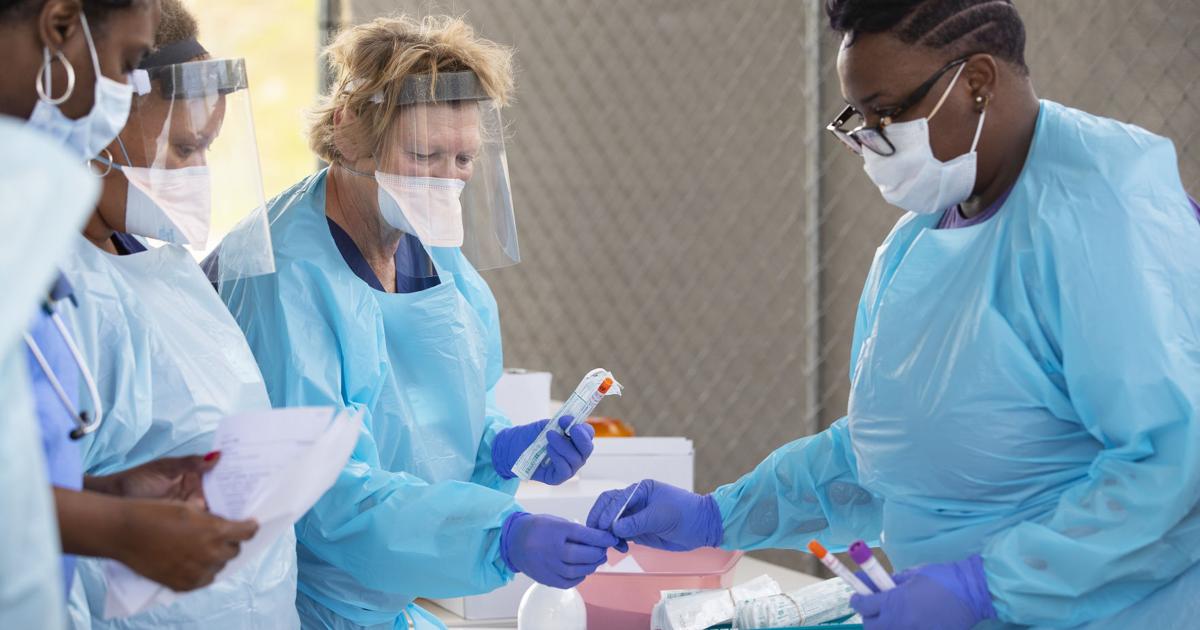The health of residents of one of Charleston’s congressional districts is far better than that of its neighbor and is likely the result of racial gerrymandering, a health expert says.
The stark differences point to the need to continue working on improving health disparities in those areas, said U.S. Representative Jim Clyburn, D-Columbia, who also represents parts of Greater Charleston.
The Congressional District Health Dashboard is a new online tool from the Robert Wood Johnson Foundation and New York University Grossman School of Medicine. It lets people compare the health of one congressional district to another across 36 different measures. These areas include health issues such as diabetes or obesity, health issues such as death from heart disease, or health factors such as air pollution or the rate of uninsured people.

While there are databases that look at health issues by county or state, there really weren’t any that offered a simple or comprehensive overview by congressional district, which is why this was created, said Dr. Giridhar Mallya, senior policy officer for Robert Wood. Johnson Foundation and public health physician in Philadelphia.
The tool can help those who want to talk to representatives about health issues in their district and can also be used by staff to explore these issues.
Congressional districts are political boundaries and often do not follow natural divisions within a state or contain cohesive communities, Mallya said, and could separate cities from suburbs from rural areas. The goal is to maximize one party’s chances in that district over another.
And often that will be by race, Mallya said, which appears to be the case with South Carolina’s 1st and 6th districts after the 2020 census.
The 1st District, which is represented by Republican Nancy Mace, is 68% white and 17% black, while Clyburn’s 6th District is 42% white and 47% black. Overall, South Carolina is 69% white and 27% black, according to the US Census Bureau. Charleston County is 25% black.

The new makeup prompted a lawsuit from the South Carolina State Conference of the NAACP and a man from Hilton Head Island in the 1st District who said the rights of black voters in Charleston had been discriminated against in the re-draw. A three-judge federal panel agreed in January, finding that 30,000 black families in Charleston had been relocated from 1st to 6th in an “austere racial gerrymander of Charleston County and the City of Charleston.”
The justices gave the SC General Assembly until March 31 to submit redrawn maps for consideration, but the heads of state appealed the decision to the US Supreme Court. Judges have yet to decide whether to take up the case and district lines remain in place for the time being.
Bordering districts present very different pictures of their constituents’ health, according to the dashboard. On most measures, the 1st Coastal District is the healthiest of South Carolina’s seven congressional districts, matching or far exceeding the state average in nearly every measure, according to an analysis by The Post and Courier.
The largely rural 6th District, on the other hand, is well below the state average, with the highest percentage of poor children in the state, the highest rate of diabetes, and the rate of highest obesity, according to the analysis.
The lack of health resources for the 6th has long been a concern for Clyburn, which has made it a priority in Congress.
“South Carolina has been considered the ‘buckle’ of the stroke belt for far too long,” he said in a statement to The Post and Courier. “Underinvestment in the 6th Congressional District has resulted in growing health and economic disparities, especially in our rural communities. That’s why I’ve been an outspoken advocate for more resources for the 6th congressional district.”
This includes his “10-20-30 anti-poverty formula,” which calls for ensuring that at least 10% of funds go to counties where the poverty rate is 20% or more over the past 30 years, which has been incorporated into many categories in appropriations bills.
Clyburn also championed a broadband initiative that resulted in the commitment of $65 billion to increase access. He and Governor Henry McMaster recently helped launch a campaign to connect every household and business in South Carolina.
“I also continue to advocate to close the coverage gap to provide health insurance for the more than 100,000 South Carolinas living in poverty who remain uninsured due to our state’s continued refusal to expand Medicaid,” said added Clyburn. South Carolina is one of 10 states that don’t.

Although there is a higher percentage of black residents in 6th, the health disparities aren’t really race-related, Mallya said.
“Poor health outcomes are often a function of a lack of investment or even disinvestment in communities of color,” he said. Lack of access to care and resources such as healthy food works against them. Sometimes it can be complex factors, like a metric on the dashboard called COVID Risk. It examines factors that put people at increased risk for severe COVID-19, such as chronic lung and kidney disease, as well as age and race, which may also increase the risk of severe outcomes.
“What this can help people understand is what the risk is at the population level, not the individual level, for poor COVID outcomes,” Mallya said. The 1st had a risk of 3 out of 10, the lowest among the districts, while the 6th had a 10 out of 10.
6th may not be the most unsanitary district in the state, according to the analysis. It could be the 7th District, which includes Myrtle Beach, Georgetown, Florence and the northeast corner counties.
It had the highest rate of uninsured people and people with high blood pressure, the worst death rate for colorectal cancer and heart disease, the highest firearm homicide rate and the worst rate of premature deaths, according to the Post and Courier analysis.
Caitlin Byrd contributed to this report.



